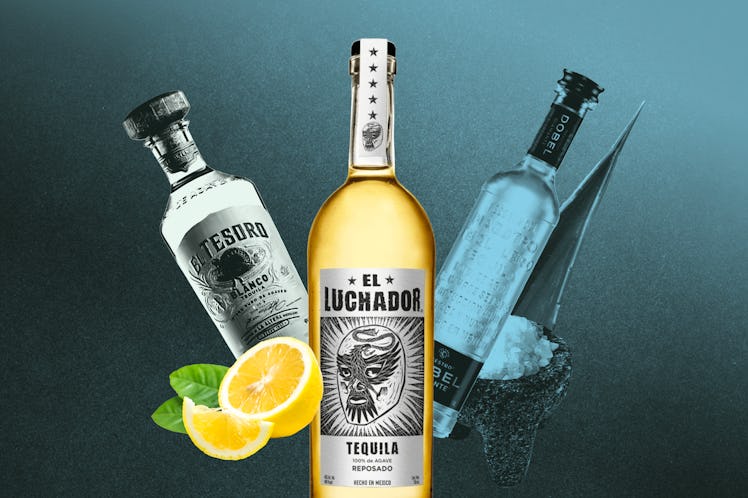12 Brilliant Bottles Of Tequila
This is what to know about the different categories of tequila, as well as some of the best bottles of each to get your hands on.

It’s astonishing how many new tequila brands are popping up these days. Especially considering that it takes nearly a decade for agave plants to mature enough to be distilled into tequila and rendered into those cocktails and frozen concoctions that help us hang on. The recent explosion in tequila’s popularity has made it a particularly hard category to navigate. And it can be pricey, so it’s important to know before you buy what the different categories are, and how they might work with the way you plan to enjoy your tequila.
Robert Simonson is an excellent person to guide us through. He’s a cocktail writer for the New York Times, author of several spirits books including Mezcal and Tequila Cocktails: Mixed Drinks for the Golden Age of Agave, and producer of the cocktail-centric newsletter, The Mix with Robert Simonson.
“It goes without saying that tequila should be 100% blue agave, no mixtos!” he says as his first piece of advice, referring to poor quality “mixto” tequila that uses other fermented sugars in the mix, such as corn syrup, and leads inevitably to the infamous hangovers that unjustly gave tequila a bad rap. By definition, tequila must be made with blue agave, and it must be produced in specific regions within Mexico. But there is ample room for variation and experimentation beyond those rules.
“When it comes down to it, I am a cocktail man, and the place I like my agave spirits best is in a cocktail,” says Simonson. “That said, people often do drink them neat, and that is the way they are largely consumed in Mexico.”
Whether you prefer to sip it neat, on the rocks, or in a cocktail, each of tequila’s different styles will strongly influence your experience. Here’s what to know about the different categories of tequila, as well as some of the best bottles of each to get your hands on.
Blanco | Plata | Silver Tequila
When it comes to tequila, the terms blanco, plata, and silver are interchangeable. They all refer to tequila that is unaged or aged less than two months. Tequilas in this category have floral, bright, peppery characteristics that make them perfect for citrus-forward cocktails.
“For a margarita, you want an affordable silver tequila of quality pedigree,” says Simonson. He makes the same recommendation for the grapefruit-centric Paloma. “They are both simple drinks, and the juice and sugar in them will mask the characteristics of whatever spirits are inside to some extent, but quality always shows, so it pays to use a good tequila.”
Reposado
Reposado tequila is aged from two to 12 months in oak barrels. It has a noticeable yellowish color, but nothing near the whiskey-brown color of añejo. The subtle aging makes it a perfect middle ground between the bright and peppery character of silver tequila, and the darker, sweeter vanilla notes of añejo. Perfect for a margarita with much softer edges, and for a smooth sipper.
Anejo and Extra Anejo Tequilas
Añejo tequila is aged between one to three years in oak barrels, which tones down the brighter grassy and citrus notes and adds new dimensions of subtle smoke, vanilla, and caramel. This makes añejo ideal either for sipping neat, on the rocks, or for mixing in cocktails as a whiskey alternative, like in an añejo old-fashioned.
Cristalino Tequilas
A hybrid category, Cristalino is aged for one to three years and then charcoal-filtered back to a silver color, which brings back some of the bright citrus notes it knew as a young tequila. The result is an exceptionally smooth tequila with añejo roundness and depth.
This article was originally published on